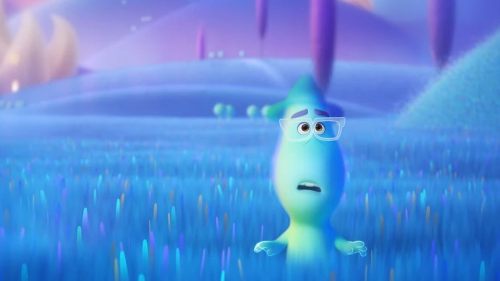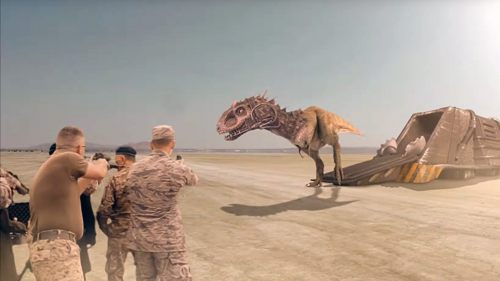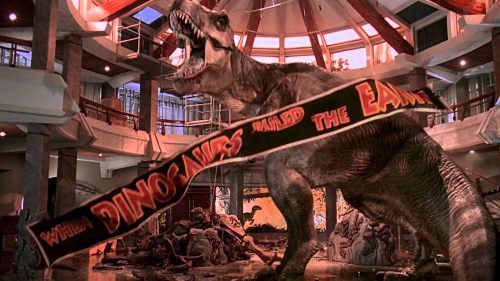In Defense Of THE GOOD DINOSAUR
Popular consensus suggests that The Good Dinosaur is Pixar’s first flop. It’s the studio’s lowest-grossing film ever both domestically and worldwide, and though it’s in the 70s on Rotten Tomatoes, the critics who disliked it really disliked it. Film Twitter chose The Good Dinosaur as one of its designated films to shit on, and it’s easy to see why. Who doesn’t love taking a titan down a peg or two? Especially one that had well-known creative issues - and a change in director - during production?
True, The Good Dinosaur could never have lived up to the high-concept cleverness of Inside Out, almost unfairly released a few months earlier. It’s true also that its own original concept - that of the dino-killing asteroid missing Earth 65 million years ago - doesn't play out in the way many audiences expected it would. But The Good Dinosaur has a lot to offer audiences who approach it on its own terms, rather than in comparison to other Pixar films or a nonexistent film they imagined in their heads. Walk with The Good Dinosaur, and you’ll find a visually gorgeous, minimalist survival Western filled with weirdos, danger, and surprisingly mature themes.
Pixar has dabbled in Western ideas before, of course, but The Good Dinosaur understands the core of the genre better than Woody ever did. Given that this film was released in a year unusually laden with Westerns, it’s got a lot to live up to. Other Westerns in 2015 explored the Old West’s emotion (Slow West), harshness (The Revenant), social issues (The Hateful Eight), and weirdness (Bone Tomahawk). The Good Dinosaur takes a little from each approach, but its principal area of interest is just how damned scary frontier life is - and why that’s a good thing. Woody represents the corny TV Westerns of white hats and black hats; The Good Dinosaur, the existential struggle of frontier life.
There isn’t much to The Good Dinosaur, but it makes the most of its spareness. As trite as it is to say “the landscape is a character,” it’s hard to find many better examples than this. The environment is the primary villain of the movie, causing the death of the hero’s father and more. But the film is in awe of that same environment. Much of the movie is made up of quiet shots of landscapes, rendered more beautifully than in any other computer generated film to date. No other Pixar movie lets us soak up atmosphere like that. It takes its time; there’s none of the frantic rushing from plot point to plot point that characterises many animated films. In its place is meditation.
The principal theme of The Good Dinosaur is fear; specifically, that fear is a useful and necessary part of life. Goofy protagonist Arlo lives on a little farm at the base of a mountain range - an oasis of calm in a great big landscape of terror. Arlo is a little guy, hesitant and afraid of nearly everything. Everyone around him sees that as an awful weakness, and crucially, so does he - if only he was strong and brave, he’d be a dinosaur worthy of his species.
Countless phobias are played upon over the course of the film, and they are played upon hard. The Good Dinosaur is a damned scary movie. Disney’s predilection for parent-killing is on prominent display, but that’s hardly the end of the horror. As someone with a fear of drowning, many of The Good Dinosaur’s terror sequences genuinely scared me; those afraid of storms, heights, being buried alive, and being preyed upon will also suffer greatly. But like the best Disney stories, these scary sequences aren’t there for shock value, and they’re definitely not as scary as they are accidentally. They’re vital to bringing home the film’s central theme.
In one of the film’s several quiet tangents, T-rex cowboy Butch (a reliably Sam Elliott-y Sam Elliott) delivers a monologue that ends in one of the most horrific mental images ever included in a family film. The notion of someone “drowning in their own blood” is a truly nasty one, but it’s not just there to scare the littlies. His story - told in a moment of relative safety - says that life is tough, strange, and often unfair, and that that’s just how life is. It’s a harsh lesson for poor little Arlo, and for young audiences, but it’s an important one. Too often family films coddle children; The Good Dinosaur goes so far in the other direction that it has to include some gentler moments just to balance itself out.
But even many of those gentler moments are quietly subversive. Arlo encounters many weirdos throughout his journey and the film’s road-movie structure. The trio of T-Rex cowpokes are probably the most normal of the bunch; a stormchasing, carnivorous cult of pterosaurs is frightfully unhinged, while a herbivorous friend to furry creatures is so weird you wonder what herb exactly he’s -ivorous of. His sequence features imagery trippy enough to rival Inside Out’s two-dimensional sequence, but its only motivation is a literal drug trip. Arlo’s new experiences on his trip are legion.
It’s easy to be distracted by the saccharine dialogue about family and love that weaves its way through the film (and is illustrated rather well through lost human Spot). The true meaning of The Good Dinosaur centres on fear, and cleverly doesn’t state that we should overcome it, but accept it. Death is inevitable in the harsh wilderness of The Good Dinosaur; for all the platitudes to which the film gives lip service, family can only make it sting a little less.
The Good Dinosaur isn’t the intimidatingly clever fare we’ve come to expect from Pixar, no. But it’s also not trying to be. It’s a traditional adventure story, and as it turns out, Pixar does traditional adventure very well. Approach The Good Dinosaur as the simple, lyrical, old-school Western parable it’s striving to be, and you’ll be rewarded for it. It’s Pixar’s prettiest movie, and also the scariest, and that alone makes it something of a marvel.



